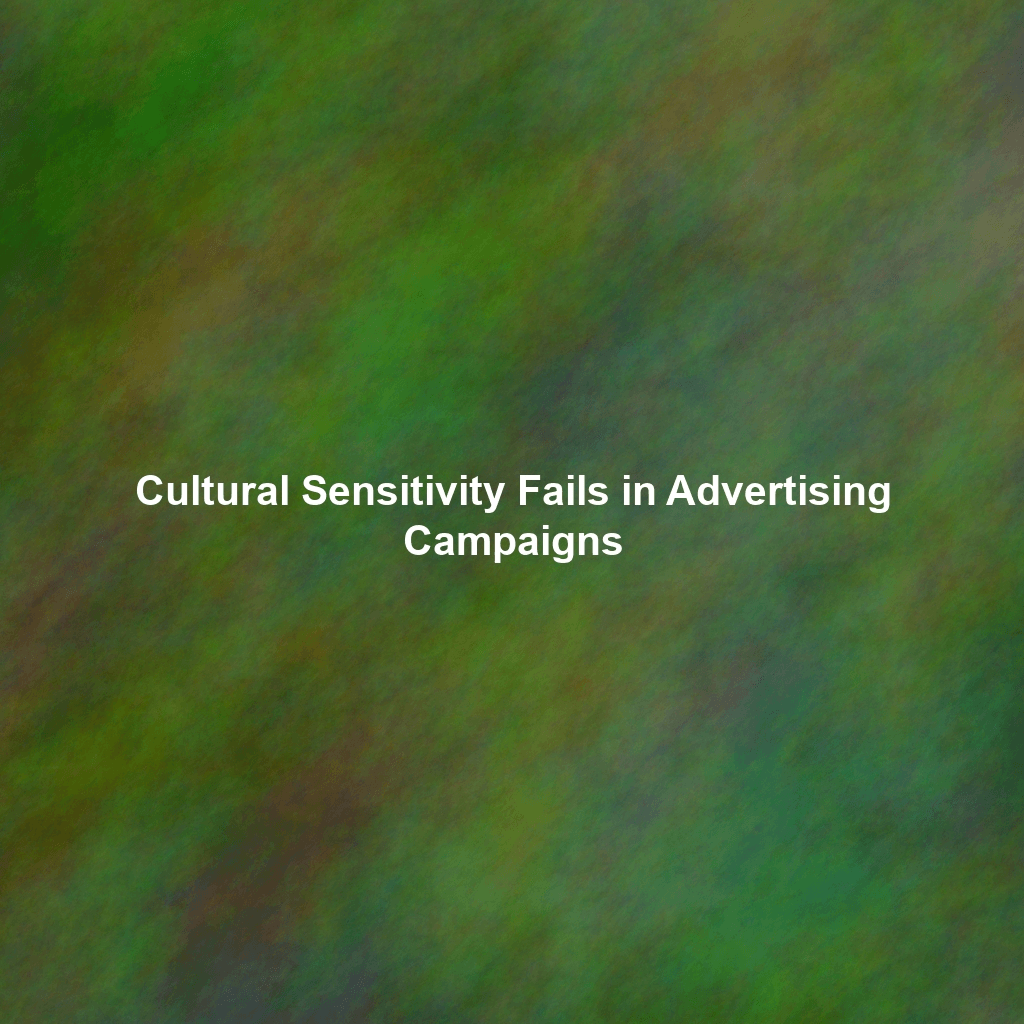The Limitations of Short-Term Influencer Campaigns
While short-term campaigns can be useful for generating immediate buzz or reaching a specific audience for a limited time, they often fall short in several crucial areas:
- Lack of Authenticity: A one-off endorsement can feel forced and transactional to audiences, especially if the influencer’s personal brand doesn’t naturally align with the product or service.
- Diminished Trust: Consumers are increasingly discerning and skeptical of superficial promotions. Repeatedly promoting different brands within short intervals can erode an influencer’s credibility and ultimately damage their followers’ trust.
- Missed Opportunity for Deep Engagement: Short campaigns rarely allow for the development of meaningful narratives or the creation of consistent brand messaging. This limits the potential for fostering deeper engagement and lasting connections with the audience.
- Difficulty in Measuring ROI: Isolating the specific impact of a single campaign can be challenging, making it difficult to accurately assess its return on investment.
The Advantages of Long-Term Influencer Collaborations
Long-term influencer partnerships, on the other hand, offer a wealth of benefits that contribute to a more robust and impactful marketing strategy:
- Building Authentic Brand Alignment: Over time, influencers become deeply familiar with the brand’s values, mission, and target audience. This allows them to create content that feels natural, authentic, and resonates genuinely with their followers.
- Increased Trust and Credibility: Repeated association with a brand builds trust and credibility among the influencer’s audience. Consumers are more likely to believe and value the recommendations of an influencer who consistently supports a particular brand.
- Development of Meaningful Narratives: Long-term partnerships provide the opportunity to craft compelling stories that unfold over time, creating a deeper connection with the audience and solidifying brand messaging.
- Enhanced Audience Engagement: Consistent and authentic content keeps the audience engaged and interested in the brand’s offerings. Influencers can foster conversations, answer questions, and build a strong community around the brand.
- Improved ROI and Measurable Results: Long-term collaborations allow for a more comprehensive and accurate assessment of ROI. Brands can track the impact of the partnership over time and optimize their strategy accordingly.
- Greater Creative Flexibility: Established relationships allow for more open communication and collaboration, leading to more innovative and impactful content creation. Influencers feel more comfortable experimenting with different formats and approaches, resulting in a wider range of engaging content.
- Advocacy and Brand Loyalty: Over time, influencers can become true brand advocates, genuinely believing in and promoting the brand’s products or services. This level of loyalty is invaluable and can significantly impact consumer behavior.
Key Elements of a Successful Long-Term Influencer Partnership
Building a successful long-term influencer partnership requires careful planning, clear communication, and a commitment to mutual growth. Here are some key elements to consider:
1. Defining Clear Goals and Objectives
Before embarking on any partnership, it’s essential to define clear, measurable, achievable, relevant, and time-bound (SMART) goals and objectives. What do you hope to achieve through this collaboration? Are you looking to increase brand awareness, drive sales, generate leads, or build a stronger brand community? Clearly defining your objectives will help you choose the right influencer and measure the success of the partnership.
2. Identifying the Right Influencers
Finding the right influencers is crucial for the success of any long-term partnership. Don’t just focus on follower count. Consider the following factors:
- Relevance: Does the influencer’s content align with your brand’s values, target audience, and industry?
- Engagement: Does the influencer have an engaged and active audience? Look beyond vanity metrics and analyze comment quality, share rates, and overall interaction.
- Authenticity: Does the influencer’s voice and style feel genuine and relatable? Avoid influencers who promote too many products or services, as this can dilute their credibility.
- Demographics: Does the influencer’s audience match your target demographic?
- Values Alignment: Do the influencer’s values align with your brand’s values? This is particularly important for long-term partnerships, as the influencer will be representing your brand for an extended period.
3. Establishing Clear Communication and Expectations
Open and honest communication is essential for building a strong and sustainable partnership. Clearly define roles, responsibilities, deliverables, and timelines from the outset. Discuss content guidelines, approval processes, and performance metrics. Regularly check in with the influencer to provide feedback, address any concerns, and ensure that the partnership is on track.
4. Fostering Collaboration and Creativity
Encourage collaboration and empower influencers to contribute their creative ideas. Remember, they are experts in their niche and understand their audience best. Provide them with the resources and support they need to create high-quality, engaging content that resonates with their followers. Avoid micromanaging their creative process, but provide clear guidelines and feedback to ensure that the content aligns with your brand’s messaging and values.
5. Providing Fair Compensation and Incentives
Compensate influencers fairly for their time, effort, and expertise. Negotiate a rate that is commensurate with their reach, engagement, and the scope of the project. Consider offering additional incentives, such as bonuses for exceeding performance targets, exclusive access to new products or services, or opportunities to collaborate on other projects.
6. Tracking and Measuring Results
Implement a robust tracking and measurement system to monitor the performance of the partnership. Track key metrics such as reach, engagement, website traffic, leads generated, and sales conversions. Analyze the data regularly to identify areas for improvement and optimize the partnership for maximum impact. Use tools like Google Analytics, social media analytics platforms, and influencer marketing platforms to track your results.
7. Building a Genuine Relationship
Treat influencers as valued partners, not just as marketing tools. Take the time to get to know them personally, understand their goals, and build a genuine relationship. Attend their events, support their content, and acknowledge their contributions. A strong, mutually beneficial relationship will foster loyalty, collaboration, and long-term success.
Examples of Successful Long-Term Brand Partnerships
Numerous brands have successfully leveraged long-term influencer partnerships to achieve significant marketing results. Here are a few notable examples:
- Sephora & Beauty Influencers: Sephora regularly partners with beauty influencers for extended periods, creating ambassador programs and collaborative product lines. This allows the influencers to deeply integrate with the brand and build trust with their audience through authentic product reviews and tutorials.
- Nike & Fitness Influencers: Nike has a long history of collaborating with athletes and fitness enthusiasts, creating partnerships that extend beyond single campaigns. These collaborations often involve ongoing content creation, event appearances, and product endorsements, solidifying Nike’s position as a leader in the athletic apparel industry.
- Daniel Wellington & Fashion Influencers: Daniel Wellington famously built its brand through long-term partnerships with fashion influencers on Instagram. By providing watches to influencers and encouraging them to showcase the product in their everyday style, the brand created a viral trend and established a strong presence in the fashion market.
Common Pitfalls to Avoid in Long-Term Influencer Partnerships
While long-term influencer partnerships offer significant advantages, there are also potential pitfalls to be aware of. Avoiding these common mistakes can help ensure the success of your collaborations:
- Lack of Due Diligence: Failing to thoroughly vet influencers before partnering with them can lead to brand damage and wasted resources.
- Ignoring Audience Feedback: Ignoring feedback from the influencer’s audience can lead to disconnect and reduced engagement.
- Overly Restrictive Guidelines: Imposing overly restrictive content guidelines can stifle creativity and make the partnership feel inauthentic.
- Neglecting Communication: Failing to communicate regularly and openly with influencers can lead to misunderstandings and missed opportunities.
- Poor Contract Negotiation: Inadequate contracts can lead to disputes and legal issues down the line.
- Lack of Flexibility: Being inflexible and unwilling to adapt to changing circumstances can hinder the partnership’s effectiveness.
The Future of Influencer Marketing: Embracing Long-Term Collaborations
As influencer marketing continues to evolve, long-term collaborations are poised to become increasingly important. Consumers are seeking authenticity and genuine connections, and brands are realizing the limitations of short-term campaigns. By investing in long-term partnerships, brands can build lasting relationships with influencers, foster trust with their audience, and achieve sustainable marketing results. The future of influencer marketing lies in cultivating meaningful collaborations that benefit both the brand and the influencer, creating a win-win situation for all involved.
Conclusion
In the dynamic landscape of influencer marketing, the shift towards long-term brand partnerships is not just a trend, but a strategic imperative. By cultivating meaningful collaborations built on mutual respect, shared values, and clear communication, brands can unlock the full potential of influencer marketing, building lasting relationships, fostering brand loyalty, and driving sustainable growth. Ditch the fleeting fling and embrace the power of a long-term commitment – your brand will thank you for it.
 Skip to content
Skip to content

